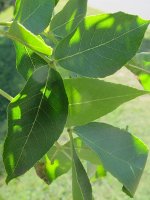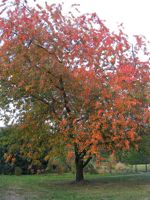Mon-Fri 9am - 5pm Mountain time
White Ash vs Black Cherry
Fraxinus americana
Prunus serotina
NOT AVAILABLE THIS SEASON - MIGHT RETURN
NOT AVAILABLE THIS SEASON - MIGHT RETURN
White Ash is a large deciduous tree that's often grown in residential yards and along boulevards.
Similar to Green Ash, White Ash is distinguished by the lighter colour of the undersides of the leaves.
While Green Ash turns gold in the fall, White Ash turns a gorgeous burgundy.
Black Cherry is common in eastern North America but a rare find elsewhere. This tree is shade tolerant and is often found in old fields, forest openings, and along fencerows.
The fruit is edible and is commonly used to flavor rum and brandy. It is also edible and often eaten fresh or used in wine or jelly. Black Cherry trees typically begin producing fruit when they are 10 years of age.
Black Cherry wood is a rich reddish-brown color and is strong, making it valued in cabinetry and woodworking. It is often used in reclamation as well.
The leaves can poison livestock as they contain cyanide derivatives and precursors. However, many have noted that deer still seem to browse their trees with impunity and birds and other animals eat the fruit when available.
White Ash Quick Facts
Black Cherry Quick Facts
Toxicity: bark and wilted leaves toxic to livestock

